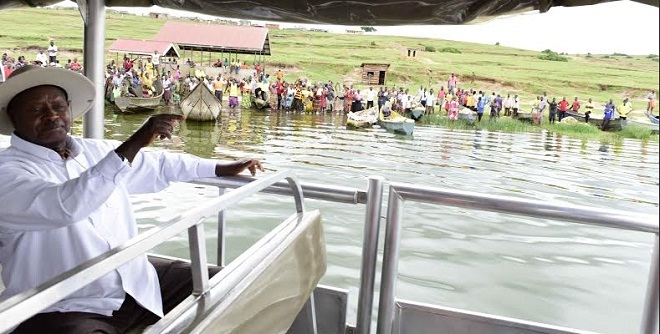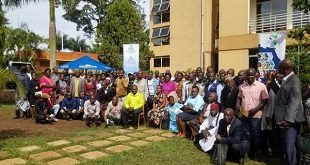
Kasese, Uganda | THE INDEPENDENT | Uganda Wildlife Authority (UWA) has identified the phasing out of 11 human settlements within Queen Elizabeth National Park as the only long-term solution to the persistent human-wildlife conflict in the area. The presence of these communities has posed a significant challenge, resulting in the loss of human lives, property damage, and retaliatory killings of animals.
Despite being recognized by UNESCO as a man and biosphere reserve, the coexistence of human settlements and wildlife within the park has become increasingly unsustainable, prompting UWA officials to propose the removal of these communities.
Queen Elizabeth National Park spans an area of 1,978 sq. km and encompasses 11 enclaves, including fishing villages such as Katwe, Hamukungu, Kazinga, Kasenyi I and II, Kashaka, Kayanja, Kahendero, Rweshama, and Katunguru.
Over time, the population in these communities has grown to an estimated 60,000 individuals, escalating competition for resources between humans and wildlife. Various measures, including electric fencing, revenue-sharing programs, and beekeeping initiatives, have been implemented to mitigate the conflict.
However, UWA asserts that permanently relocating these communities remains the most effective solution. Bashir Hangi, the UWA communication manager, addressed the challenges posed by human settlements within the park.
He noted that the close interaction between community members and wildlife not only hampers conservation efforts but also enables poachers to disguise themselves as locals, resulting in further harm to the park’s wildlife.
While acknowledging the effectiveness of existing interventions, Hangi emphasized the inevitability of ongoing conflicts due to the growing populations and resource demands on both sides. He stressed the importance of relocating these communities, as fencing the entire park would be impractical and compromise its natural integrity.
“In some parts, people are growing maize and rear domestic animals for their livelihood, and these same things attract animals to eat. We can not fence the whole park and make it like Zoo, the fencing is only for the most problematic hotspots. But with all this, the best solution would be getting these people out of the park,” he explained.
Steven Nyadru, the Assistant Tourism Warden of Queen Elizabeth National Park, echoed these sentiments, noting how fishing communities have expanded beyond their initial purpose, encroaching on the park’s core objectives.
“The aim was just to fish and take fish out of the park, but now where we have reached, from fishing villages we have got parishes now, some are sub-counties, and others have developed into town councils. With this increased population, they are also bringing cows to graze, which become prey to the predator in the park, and the communities retaliate,” he said.
Andrew Mateera, the chairperson of Rutooke cell, opposed the idea of community displacement, citing a long history of coexistence between villagers and wildlife. He noted the positive impact of recent interventions such as electric fencing and revenue-sharing programs, which have improved relationships and reduced incidents of conflict.
“And the revenue collection-sharing has improved the quality of our lives and now slowly people are no longer poaching. With this, I don’t see why one should think of getting out of this place where our great grandfathers are buried,” he explained.
Chris Kaseke, a former poacher and leader of the Lake Katwe United Bee Keepers’ Association, attested to the transformative power of initiatives like beekeeping, which have provided alternative livelihoods and incentivized conservation practices among community members.
“I was born and raised as a poacher, beekeeping has helped me to reform, get an income for my livelihood, and I am not alone, many young people are being reformed. For example, we started as 15 people in 2015, but now the association has up to 120 members,” he said.
***
URN
 The Independent Uganda: You get the Truth we Pay the Price
The Independent Uganda: You get the Truth we Pay the Price



